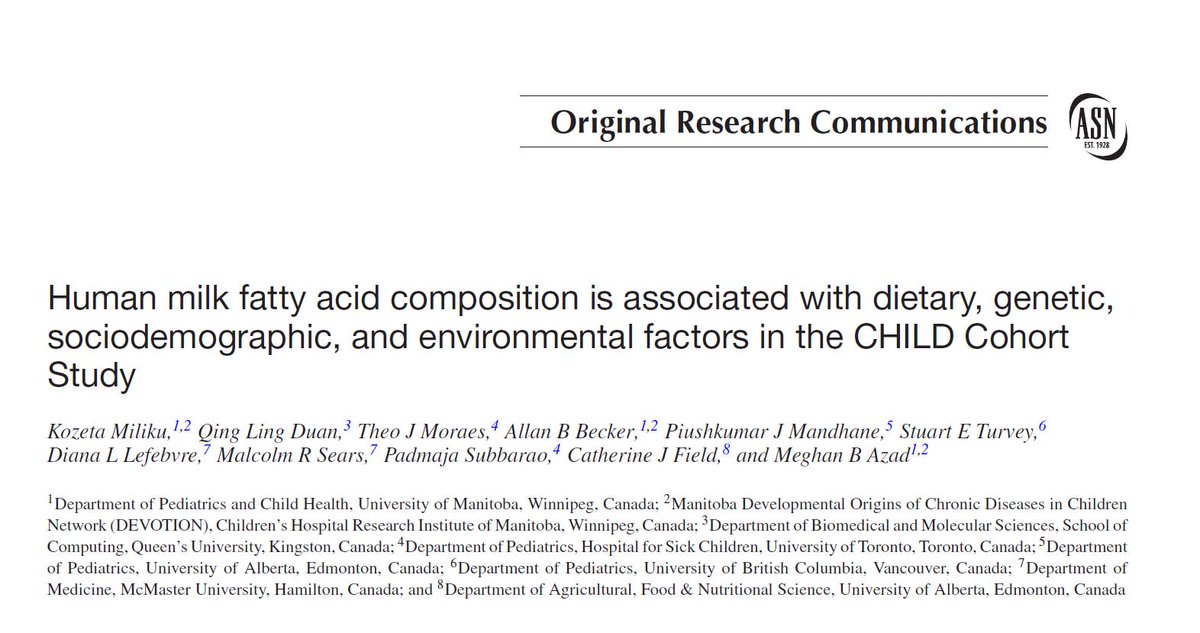Discover and read the best of Twitter Threads about #humanmilk
Most recents (3)
📢New paper out in @mSystemsJ, coauthored w/ the amazing @MeghanAzad!
Inspired by community #ecology theory and computational #microbiome methods, we propose a novel strategy for studying #humanmilk.
journals.asm.org/doi/10.1128/ms…
Inspired by community #ecology theory and computational #microbiome methods, we propose a novel strategy for studying #humanmilk.
journals.asm.org/doi/10.1128/ms…
We focused on 3 major barriers to understanding #breastmilk
1⃣Milk contains thousands of components, yet most studies analyze just one or a few
2⃣Milk changes over time, yet longitudinal studies are rare
3⃣We lack computational tools & methods to study milk as a complex SYSTEM
1⃣Milk contains thousands of components, yet most studies analyze just one or a few
2⃣Milk changes over time, yet longitudinal studies are rare
3⃣We lack computational tools & methods to study milk as a complex SYSTEM
From a #DataScience perspective, to study complex biological processes such as #humanmilk and lactation, it is essential to take an integrative and ‘multi-layer’ approach.
📣New paper out in @mSystemsJ, coauthored w/ the fabulous @LiatShenhav!
In this review, we apply our (very!) different skillsets to propose a new strategy for studying #humanmilk as a biological system, using methods developed for #microbiome research.
🧵
journals.asm.org/doi/10.1128/ms…
In this review, we apply our (very!) different skillsets to propose a new strategy for studying #humanmilk as a biological system, using methods developed for #microbiome research.
🧵
journals.asm.org/doi/10.1128/ms…

👩🏻💻Liat is a computational scientist who develops bioinformatics methods to analyze microbiome data.
👩🏻🔬I am a human milk scientist who wants to study ALL THE THINGS in milk and figure out how they all work together.
👩🏻🔬I am a human milk scientist who wants to study ALL THE THINGS in milk and figure out how they all work together.
Inspired by this @AJCNutrition review from @ParulChristian, @DrEmilyRSmith & others from @NIH & @gatesfoundation, Liat & I teamed up to brainstorm... 🧠
academic.oup.com/ajcn/article/1…
academic.oup.com/ajcn/article/1…
1/11 Today we celebrate #NationalBreastfeedingWeek sharing our most recent study published in @jnutritionorg #Azadlab @CHILDSTUDY Happy #Breastfeeding Week! academic.oup.com/ajcn/article/d… 

2/11 Human milk fatty acid composition is associated with dietary, genetic, sociodemographic and environmental factors in the @CHILDStudy. We studied determinants and patterns of milk fatty acids using the fountain of @CHILDStudy data, one of the largest Canadian birth cohorts.

